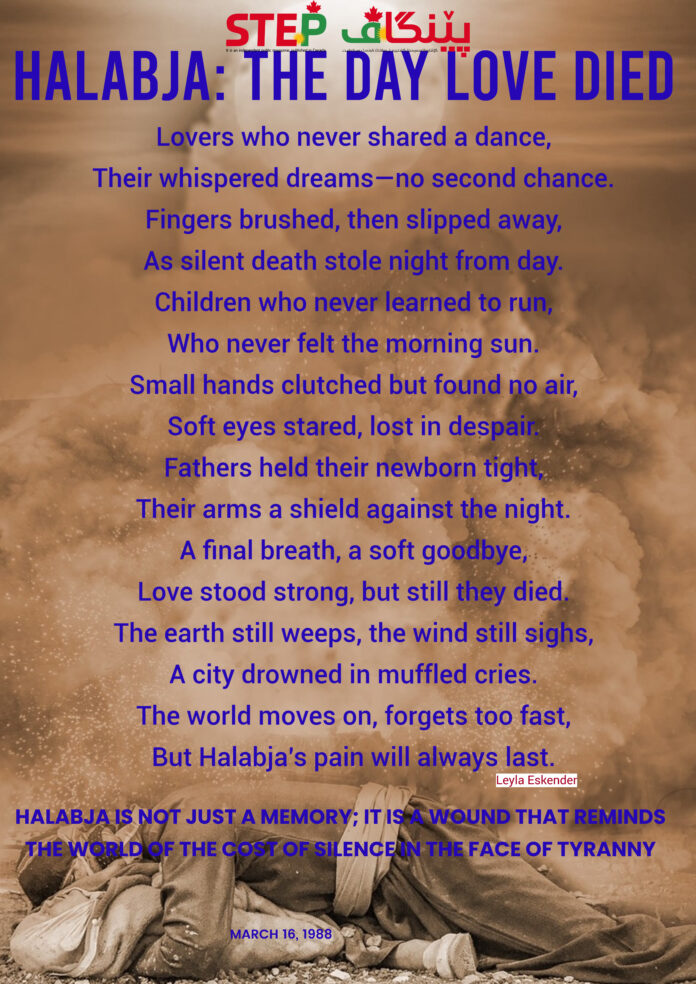STEP Magazine Staff
Halabja Massacre: The Day Humanity Failed
On March 16, 1988, the sky over Halabja turned a sickening shade of yellow. It wasn’t warplanes dropping bombs on military targets. It wasn’t a battle between armies. It was a massacre—deliberate, calculated, and monstrous. Saddam Hussein’s Ba’athist regime, in its ruthless campaign to exterminate the Kurdish people, unleashed one of the deadliest chemical attacks in history.
Within minutes, the city of 50,000 was transformed into an open-air gas chamber. Iraqi warplanes rained down a lethal cocktail of mustard gas, sarin, VX, and other nerve agents. The air filled with the scent of apples—a deceptive, sickly-sweet smell of death. Children convulsed, their tiny bodies writhing on the ground. Mothers clutched their infants, their lungs burned from the inside. Fathers collapsed in the streets; their eyes blinded by toxic fumes.
More than 5,000 people perished in just a few hours. Some suffocated instantly; others died in agony, their skin peeling, their nervous systems shutting down. The lucky ones died quickly. The unlucky survived—only to endure lifelong suffering: cancers, birth defects, neurological disorders, and a poisoned land that still bears the scars of that day.
This was not collateral damage. This was genocide.
The Anfal Campaign: A Systematic Erasure
Halabja was not an isolated atrocity—it was part of the Anfal campaign, a brutal military operation aimed at the total destruction of the Kurdish people. Between 1986 and 1989, over 182,000 Kurds were systematically slaughtered. Kurdish men were forced into mass graves. Women and children were driven into concentration camps where starvation and disease finished what Saddam’s soldiers had started.Villages were bombed, families were rounded up and executed, entire communities were wiped from the map.
The world knew. And the world did nothing.
Complicity and Silence
Western intelligence agencies had evidence of Iraq’s chemical weapons program long before Halabja. Satellite images showed mass graves. Reports from survivors and defectors warned of the horrors unfolding. But Iraq was an ally to many powerful nations—so they looked the other way. Instead of sanctions, Saddam’s regime received military aid, weapons, and diplomatic support. Even after the massacre, the U.S. and its allies hesitated to condemn the attack, prioritizing political alliances over human lives.
Justice came decades too late. In 2006, Saddam Hussein was sentenced to death—not for Halabja, but for crimes against Shiite Iraqis. His cousin, Ali Hassan al-Majid, infamously known as “Chemical Ali,” was executed in 2010 for orchestrating the genocide. But no punishment can undo the suffering, nor can it erase the complicity of those who enabled these crimes.
Halabja: A Wound That Will Never Heal
Today, Halabja stands as a symbol of Kurdish resilience. But the scars remain—etched into the land, into the bodies of survivors, into the memories of those who lost everything. The soil is still contaminated. Families still mourn. Generations later, children are born with deformities caused by the lingering toxins.
We say “Never again.” But the world has not learned. Chemical weapons are still used. The Kurdish people are still stateless, still facing oppression, still waiting for justice.
The blood of Halabja still cries out.
Will the world finally listen? Or will it turn away—again?





